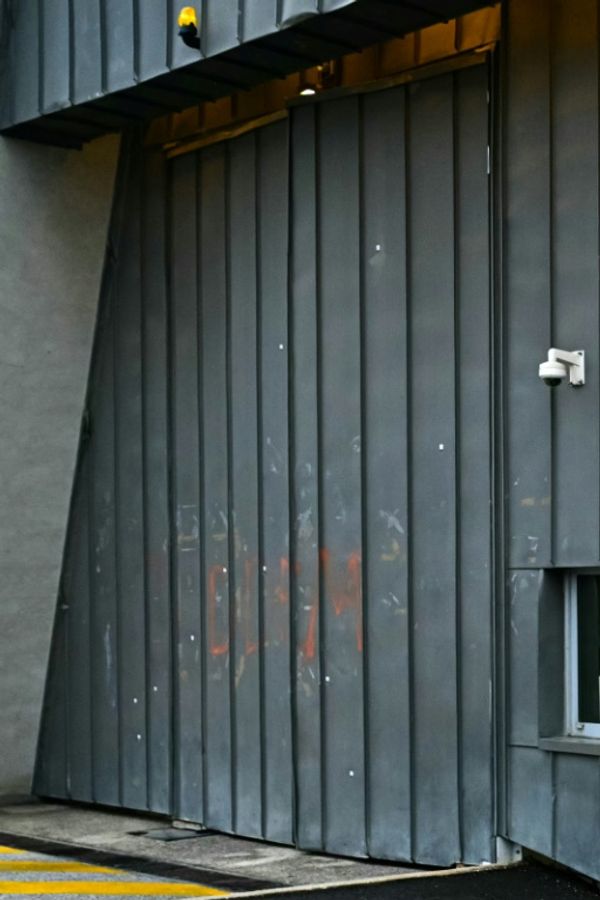.jpg)
The attempt to assassinate Donald Trump, particularly the manner in which his would-be assassin Thomas Mathew Crooks hid himself in plain sight, is similar to an assassination attempt on Rajiv Gandhi, just two years after he became the Prime Minister in 1984, and five years before he was killed by a suicide bomber of the LTTE during the 1991 election campaign in Sriperambadur, outside Chennai.
An assassination, which according to BJP IT cell warrior-in-chief Amit Malviya, was for “political decisions”. On Monday, Malviya said in a TV discussion that “before the Congress claims their own leaders got assassinated, I want to remind them that they were assassinated for the political decisions they took”. That is a dangerous justification of political violence.
Prime ministers of all hues in the 77 years of India’s independence have had to take difficult decisions. Such decisions have been in the larger interests of the country as they saw fit at the time, or when they served their own political interests or fulfilled their party’s ideological agenda. Two Indian PMs were assassinated for their decisions while in office. Both were attacks that aimed to undermine India.
The gazebo at Rajghat to conspiracy in UK
Rajiv Gandhi’s assassination aimed explicitly to change the course of an election. But before that, in the six-year period during which Gandhi was Prime Minister and opposition leader, he was the target of many foiled assassination plots, perhaps more so than any other Indian leader.
He became PM in political circumstances that were hardly propitious. Chosen by party seniors to succeed Indira Gandhi on October 31, 1984, the same day that she was killed by her bodyguards to avenge the army’s storming of the Golden Temple, it was under his watch that a carnage of Sikhs took place in Delhi. Two months later, Rajiv Gandhi led the party into a general election, and riding a sympathy wave, won a landslide victory with 404 seats.
In the following years, several plots to eliminate him were foiled, in India and abroad.
In 1985, the FBI arrested five Sikh suspects for an alleged conspiracy to kill Gandhi during his visit to the US that year. In 1987, Harjinder Singh Jinda of the Khalistan Commando Force was arrested for the the killing of Lalit Maken and his wife in Delhi in 1985, and of General AS Vaidya, the army chief during the military storming of the Golden Temple in Amritsar. Jinda is reported to have confessed that immediately after gunning down the Makens, he had taken position outside Ram Manohar Lohia Hospital with the intention of killing Gandhi when he visited the hospital but gave up as he could not get a clear view of his target due to the crowds and heavy security.
In October 1985, the British police unearthed another alleged conspiracy to kill Gandhi at London during a visit to the UK that month. More than a dozen men were initially arrested. Three were eventually charged for the offence of a conspiracy to murder Gandhi, and soliciting the help of two purported IRA members, who were British undercover agents who had infiltrated the group. Two were convicted and sentenced – one for 16 years and another for 15.
The closest a would-be-assassin came to Gandhi was in Colombo, in 1987. Gandhi was in Sri Lanka to sign the Indo-Sri Lanka Accord with Sri Lankan president J R Jayewardene. The day after, at the departure ceremony for the Indian Prime Minister, a navy sailor assaulted him with his rifle butt as Gandhi inspected a guard of honour. Gandhi ducked, taking the hit on his shoulder.
But it was an attempt to kill Gandhi a year before, at Rajghat on October 2, 1986, which bears resemblance to the assassination attempt on Trump. It too had one person, acting on his own, staked out at a spot in close proximity to the target, perhaps so obvious a hiding place that it was never searched. The difference, to India’s good fortune, was that the man who drew the gun on Gandhi on that day was armed with a country-made revolver and had never held a weapon before, while the 20-year-old Crooks was armed with a sophisticated semi-automatic rifle and was clearly an expert marksman.
On that day, as Gandhi, accompanied by his wife Sonia, President Zail Singh, and several ministers, including Home Minister Buta Singh, and the Lieutenant Governor of Delhi, walked through the VIP entrance to the Gandhi samadhi, everybody heard a distinct popping sound. A look around revealed nothing. At first it was assumed to be the sound of a scooter backfiring, but as that was unlikely at the cordoned off memorial where no public vehicles were allowed, the phalanx of security personnel launched a frantic hunt with sniffer dogs. They looked behind bushes and checked the trees but found nothing suspicious. Meanwhile, the prayer service continued.
One of the sniffer dogs finally smelt out the pellet in a flowerbed. But the person who had fired it would continue to remain unspotted for another hour, giving him an opportunity to take one more shot as Gandhi and Sonia were being escorted back into their car by the Special Protection Group.
Though the Prime Minister and other ministers were unharmed, some six people, including a Congress MLA from Haryana and some security personnel, sustained minor pellet injuries. It was only after this that the would-be-assassin revealed himself from his hiding place on top of a 10-ft-high gazebo, covered by a bushy bougainvillaea from the ground up. Security personnel fired shots at him, and he might have been killed had it not been for a senior officer who screamed out an order not to shoot him.
The elevated perch was barely a few feet away from the walkway.
India was fortunate that morning that the man identified as Karamjit Singh of Sunam in Punjab was not armed with a more lethal weapon, and was a novice with guns. He had been hiding up the structure for several days, biding his time for Gandhi to appear on October 2. He had considered other venues, including the Red Fort from where Gandhi had addressed the nation on August 15 that year, and finally chose the gazebo at the VIP entrance at Rajghat as it offered him his best chance. And he had not been spotted despite specific intelligence that Gandhi would be targeted in an attack at Rajghat on that day. It never occurred to security personnel to search the structure while sanitising the site.
In his book Intelligence Over the Centuries, Vappala Balachandran, a former special secretary at the Research and Analysis Wing, recounts how the intelligence input, received sometime in September 1986 from a RAW source, was that a terrorist dressed as a gardener would mount an armed attack on the Prime Minister from behind the foliage at the memorial on Gandhi Jayanti
“This information received through a source seemed at first impossible as an event like this at Rajghat would have usually ensured presence of massive police units along with Special Protection Group guarding the Prime Minister and Intelligence Bureau. There was a long discussion in our organisation on whether to disseminate or not as the source was ‘casual’ and also because he was raised for watching overseas travels of Sikh militants. In addition, our organisation was not responsible for internal Intelligence. Another fear was that it would result in derisive comments if it turned out to be a hoax,” Balachandran recalls.
The input was eventually sent to the Intelligence Bureau, Delhi Police and the SPG, which had been raised for the protection of Prime Ministers after Indira Gandhi’s assassination. Each agency was expected to analyse the input and take action, and might have launched its own investigation, without coordinating with the others, Vappala writes. In violation of rules, Delhi Police put up the secret message on its noticeboard.
The assassination attempt caused a national uproar. It was discussed in Parliament where members wanted to know why security personnel had failed to search the most obvious hiding spot. Several police officials were suspended.
The difference between the two bids
Despite talk of an international plot, Karamjit turned out to be a lone wolf. After serving 14 years in prison, he was released in 2000, and now lives in Sunam. His motive, as he revealed during the investigation, was revenge for the massacre of Sikhs that followed Indira Gandhi's assassination. In 2009, he told an interviewer that he had witnessed the killing of his friend in the 1984 riots in Delhi. He had decided to kill Gandhi after hearing his justification of the riots with the words “when a big tree falls...”
After Karamjit narrowed down on Rajghat as the place where he would carry out the killing, his search for a weapon took him to Amritsar. There, information about his open enquiries for the purchase of a gun, even stating his purpose, got picked up by an intelligence operative who forwarded it to Delhi. He says he was turned away by those he approached for a weapon. When his effort in Amritsar failed, Karamjit went to Sri Ganganagar and bought a desi katta for Rs 300.
In the interview he describes that he spent five nights on the structure, between two huge beehives on the walls of the gazebo. It rained the whole time and he was soaked to the skin, but he remained in his open-hideout. He saw security personnel sanitise the area everyday, but never once check his hideout.
In the case of Crooks, who was discovered just as he fired his first shot, security personnel had only split seconds to prevent him from firing again. He was taken out by a Secret Service sniper before he could do that.
In the case of Karamjit, nearly an hour passed after the first shot, and it was only after he fired a second, and by his own account, a third, that he was spotted. He was overpowered, arrested, tried and convicted.
In a country that was still in the throes of the assassination of a Prime Minister and its violent aftermath, the consequences had he succeeded in his mission are too horrific to contemplate. Just the day after this attempt on Gandhi's life, Julio Ribeiro was targeted in Punjab. The incidents were unconnected but that is how fraught the security situation in the country was at the time. The fact that Karamjit was captured alive helped establish his motive early, and ascertain if he was acting on his own or in collaboration with others.
Complaining about the media is easy. Why not do something to make it better? Support independent media and subscribe to Newslaundry today.
Newslaundry is a reader-supported, ad-free, independent news outlet based out of New Delhi. Support their journalism, here.







